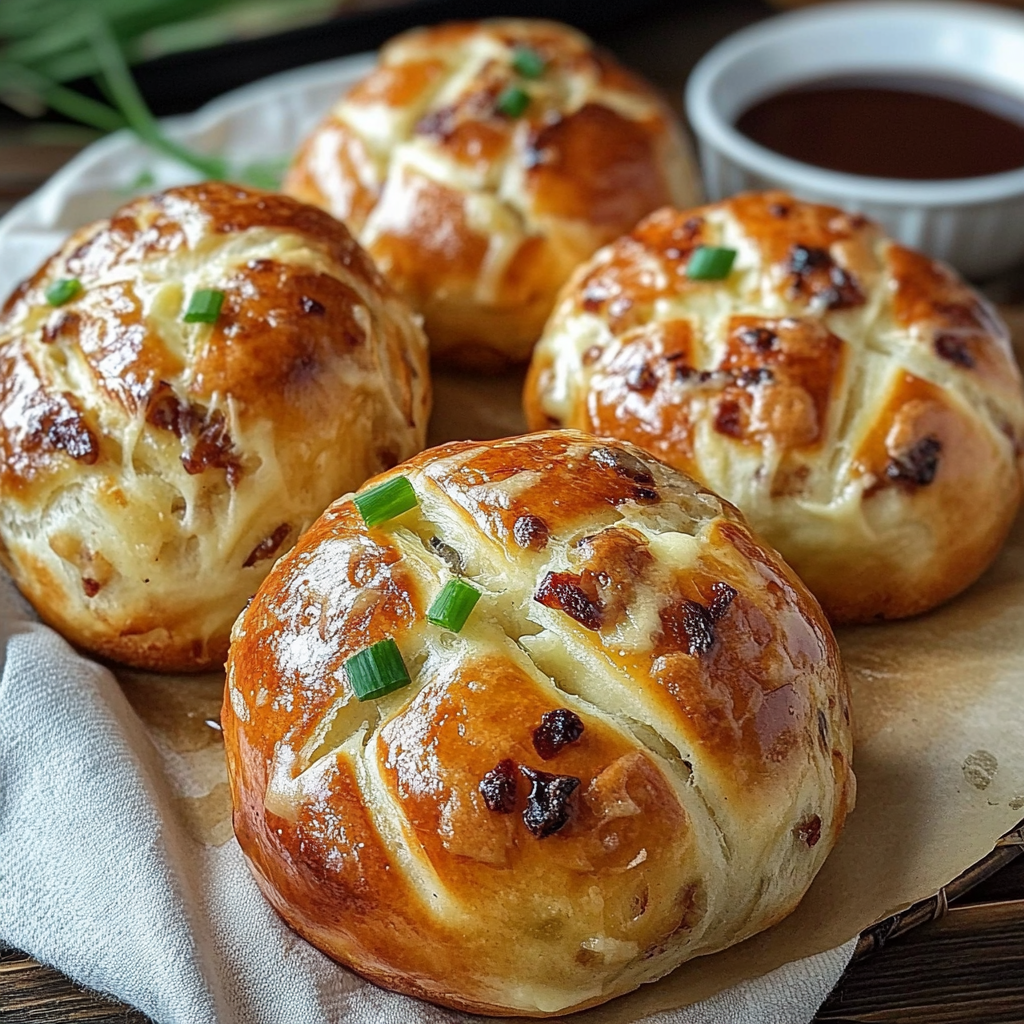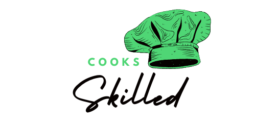What Are Traditional Hot Cross Buns?
Traditional hot cross buns are soft, spiced yeast rolls, typically enjoyed during the Easter season — especially on Good Friday. These golden, pillowy buns are made with enriched dough infused with aromatic spices like cinnamon, nutmeg, and allspice, and are generously studded with dried fruits such as currants, raisins, or sultanas. What sets them apart visually and symbolically is the signature cross piped on top, often made from a simple flour-and-water paste.
The cross symbolizes the crucifixion of Jesus Christ, and the buns have become a cultural and religious emblem in many Christian households. While originally rooted in British tradition, hot cross buns are now enjoyed worldwide — often served warm with butter, toasted for breakfast, or repurposed in creative ways like bread pudding.
Today, they’re both a nostalgic treat and a timeless culinary tradition, connecting the past to present-day celebrations through flavor, faith, and family.
Much like other iconic spring treats such as these Easter Speckle Cupcakes, hot cross buns often appear at family tables during the holiday season. But their appeal stretches far beyond Easter brunch.
If you’re creating an Easter dessert spread, pair your buns with these festive Cadbury Egg Cookies for the ultimate themed celebration.
📜 Historical Origins and Evolution of Hot Cross Buns
The story of hot cross buns begins in medieval England, where they were first baked by monks as part of religious observance. Legend has it that a 14th-century monk at St. Albans Abbey created the original version, called the “Alban Bun,” and distributed it to the poor on Good Friday. Marked with a cross to symbolize the crucifixion of Jesus, these early buns were not just food — they were spiritual offerings.
By the 16th century, hot cross buns had grown so popular in England that Queen Elizabeth I passed a decree banning their sale except on religious holidays like Good Friday, Christmas, and burials — reinforcing their sacred significance.
Over the centuries, they evolved from strictly religious fare into widely beloved Easter-season treats. Superstitions surrounded them too: some believed that hot cross buns never went stale, and sailors would take them on voyages to ward off shipwrecks.
Why Traditional Hot Cross Buns Are Unique
Each bun is filled with cinnamon, nutmeg, and dried currants or raisins, delivering a warm, nostalgic aroma. This is similar to the rich spice profile of Homemade Cinnamon Rolls, but the buns are traditionally leaner and less sweet.
Ingredients Breakdown: What Makes a Bun “Traditional”
What defines a Traditional Hot Cross Buns is its rich combination of spiced, fruity, and yeasty elements — all carefully balanced to deliver a soft texture and a warming, aromatic flavor.
Here’s what goes into an authentic version:
- Flour: Typically bread flour or all-purpose flour for a strong gluten structure.
- Yeast: Either instant or active dry yeast gives the buns their fluffy rise.
- Milk & Butter: These enrich the dough, making it soft and tender.
- Eggs: Add richness and color to the crumb.
- Sugar: Usually white or brown sugar for a subtle sweetness.
- Spices: Cinnamon, nutmeg, clove, and sometimes cardamom — essential for the bun’s warm aroma.
- Dried Fruit: Currants, raisins, or sultanas are traditional. These are often soaked in warm water or rum for extra plumpness.
- Citrus Zest: Orange or lemon zest brightens the flavor and balances the spice.
The iconic cross on top is usually piped using a simple paste of flour and water, added just before baking. A final sugar glaze gives the buns their beautiful sheen.
👨🍳 Recipe Breakdown: Step-by-Step for Traditional Hot Cross Buns
Making traditional hot cross buns at home may take time, but the result is well worth it — soft, spiced, and rich with history. Here’s a detailed breakdown of the process to help you bake them perfectly.
Step 1: Soak the Fruit
- Place currants, raisins, or sultanas in a bowl.
- Cover with warm water, orange juice, or rum for a deeper flavor.
- Let soak for at least 30 minutes, then drain and pat dry.
Step 2: Prepare the Dough
- Warm ¾ cup of milk (not hot), and combine with 2 ¼ tsp yeast and 1 tbsp sugar. Let sit for 10 minutes until frothy.
- In a large bowl, mix 3 ½ cups bread flour, 1 tsp salt, 1 tsp cinnamon, ½ tsp nutmeg, and zest of 1 orange.
- Add the yeast mixture, 1 egg, and ¼ cup melted butter. Mix until a sticky dough forms.
Step 3: Knead and First Rise
- Knead the dough for 8–10 minutes until smooth and elastic.
- Place in a greased bowl, cover, and let rise for 1.5–2 hours, or until doubled in size.
Step 4: Add Fruit and Shape
- Punch down the dough, knead in the soaked fruit evenly.
- Divide into 12–16 equal pieces. Shape into balls and place on a baking tray lined with parchment.
Step 5: Second Rise & Cross
- Cover and let rise again for 30–45 minutes.
- Mix ½ cup flour with 5–6 tbsp water into a thick paste.
- Pipe crosses on each bun using a piping bag or ziplock with the tip snipped.
Step 6: Bake and Glaze
- Bake at 375°F (190°C) for 18–22 minutes, until golden brown.
- While warm, brush with a glaze made of ¼ cup sugar dissolved in 3 tbsp water.
Serve warm with butter — and enjoy the flavor of tradition!

How to Serve Them
Hot cross buns shine warm from the oven, split and spread with butter or jam. For a twist, turn leftovers into a pudding or serve with bright, seasonal sides like Carrot Apple Salad.
Storage & Freezing Tips for Traditional Hot Cross Buns
You can refrigerate them for up to 3 days or freeze for up to 2 months. Reheat gently in the oven to maintain softness.
For other baked goods that freeze well, check out this fruity dessert: Fresh Strawberry Yum Yum.
🍰 Complementary Treats & Occasions
Pair your buns with rich and creamy desserts like Strawberry Mousse or whip up Cheesecake Deviled Strawberries for a vibrant Easter platter.
🌱 Healthier Alternatives and Allergen Tips
If you’re looking to make traditional hot cross buns a bit healthier or more inclusive for dietary needs, there are plenty of simple substitutions.
For a lighter version:
- Use whole wheat flour for added fiber and nutrients.
- Reduce sugar by swapping with honey, maple syrup, or coconut sugar.
- Replace some butter with Greek yogurt or a neutral oil like avocado oil.
Dairy-free?
- Substitute plant-based milk (like almond, oat, or soy).
- Use vegan butter or coconut oil.
Egg-free?
- Replace eggs with a chia seed or flaxseed egg (1 tbsp seeds + 2.5 tbsp water).
Gluten-free?
- Opt for a gluten-free flour blend specifically made for yeast baking. Add a binding agent like xanthan gum to improve texture.
Low-fat tips:
- Skip the glaze or opt for a light maple drizzle instead of sugar syrup.
These small swaps let everyone enjoy hot cross buns without sacrificing flavor or tradition, National Geographic – Easter Food Traditions
FAQs About Traditionalisme Hot Cross Buns ?
What is the tradition behind hot cross buns?
Hot cross buns are traditionally eaten on Good Friday to commemorate the crucifixion of Jesus Christ. The cross on top symbolizes the cross on which Jesus died. Over time, they’ve become a broader Easter-season treat symbolizing renewal and rebirth.
Are hot cross buns actually religious?
Yes, their origins are deeply tied to Christian religious traditions. Initially baked by monks, they were considered sacred and even banned from sale on non-holy days in 16th-century England.
Can I make hot cross buns without yeast?
You can make yeast-free versions using baking powder or self-rising flour, but they will have a more scone-like texture and won’t be as fluffy as traditional versions made with enriched yeast dough.
Why are my hot cross buns dense?
Common reasons include:
- Not allowing enough proofing time
- Using too much flour
- Overworking the dough
Always make sure your dough is soft and elastic, and allow it to double in size during each rise.
Can I freeze homemade hot cross buns?
Absolutely! Once cooled, wrap them individually and freeze for up to 2 months. Thaw at room temperature and reheat in the oven or toaster for best results.
When should hot cross buns be eaten?
Traditionally on Good Friday, but they’re now enjoyed throughout Lent and even year-round thanks to their popularity!
Final Word for Traditional Hot Cross Buns
Traditional Hot Cross Buns aren’t just a tasty Easter treat — they come with centuries of quirky traditions and folklore. In old English superstition, buns baked on Good Friday were believed to never mold and could be hung in kitchens to ward off evil spirits. Sailors even carried them aboard ships for protection against shipwrecks. One of the earliest references comes from a 1733 London street rhyme: “One a penny, two a penny, hot cross buns!”
Whether you enjoy them for their flavor or their symbolism, these buns serve as a delicious reminder of the intersection of faith, food, and history.



